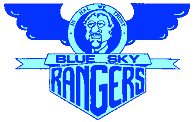USCF Chess



INTELLIVISION CARTRIDGE [Mattel Electronics #3412]
Release Nov 23, 1982 (#41)
Trademark used under license from U.S. Chess Federation
AKA: Chess
Heuristics programming: Teletape, Inc
User interface programming: Russ Ludwick
Graphics: Dave James, Peggi Decarli
Package Illustration: Jerrol Richardson


PRODUCTION NOTES
A good Chess program was beyond the capabilities of the both the Intellivision hardware and the Intellivision programmers, but Marketing felt that it was a must-have title to establish the Intellivision as more than a toy.
Money was authorized to produce the Chess cartridges with 2K of RAM on board to bolster the insufficient 147 available bytes in the Master Component. No other Mattel Intellivision cartridge was released with onboard RAM.
The gameplay programming was farmed out to Teletape, Inc., a company with experience in Artificial Intelligence. In-house, Russ Ludwick programmed the on-screen display and user interface.
Although on the schedule from early on, the technical difficulties (including a record 19 weeks of testing and debugging) held up release of the cartridge until 1983. When finally released, it did receive the good reviews Marketing was looking for.
The program code was recycled in the Triple Challenge cartridge released by INTV Corporation.

